Introduction
Despite some disappointing audio quality results and a design more bland than cold porridge, these cans are quite comfortable to wear. With that in mind, they still perform leagues better than some of the other headphones we've reviewed in the past, included in our comparison sections.
Product Overview
{{section_header}}{{section.name}}{{/section_header}}
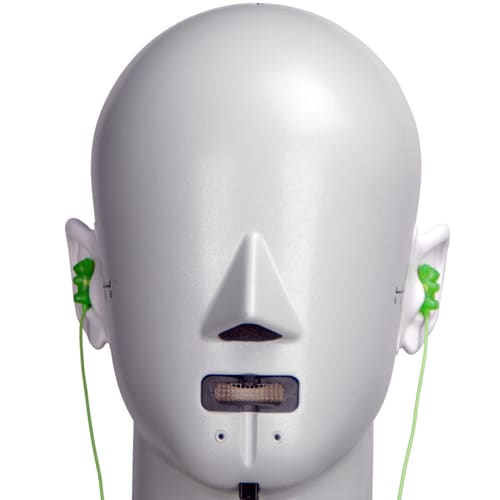
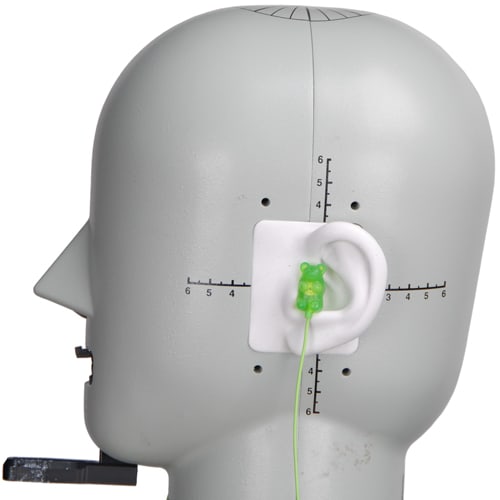
Speakers
{{section_header}}{{section.name}}{{/section_header}}
Beyond the fake leather cups of the JVC HA-M5Xs you'll find the cloth-protected speaker element. Unfortunately the cups cannot be removed for easy cleaning, but the cloth should protect your HA-M5Xs from most foreign-object damage.
Sides
{{section_header}}{{section.name}}{{/section_header}}
Back
{{section_header}}{{section.name}}{{/section_header}}
The back of the ear cups sport the Xtreme Xplosive branding, ironically clad in the most bland and subdued design and lack of actual explosives.
Band
{{section_header}}{{section.name}}{{/section_header}}
The band is made of the same black plastic, with a soft foam and cloth padding on the underside. The cloth is urban-camo patterned just in case having the padding glued to your head didn't provide it enough camouflage.
Cable
{{section_header}}{{section.name}}{{/section_header}}
The bright red cable screams "serious business," but is actually pretty standard; measuring in at just under 4 feet in length and clad in somewhat thin insulation.
The plug is a standard 1/8th inch jack.
The cord guards on the HA-M5Xs are absurdly thick rubber, attached at the base of each ear cup.
Additional Features
{{section_header}}{{section.name}}{{/section_header}}
In the Box
{{section_header}}{{section.name}}{{/section_header}}
In the clear plastic case you will find your headphones. That's pretty much it.
Durability
{{section_header}}{{section.name}}{{/section_header}}
The headphones themselves seem to be durable enough, but they lack many of the same build features that similarly-priced headphones have, like metal band elements. Still, the plastic s very thick, so you are unlikely to break it unless you make it a habit of jumping up and down on your cans.
Aesthetics
{{section_header}}{{section.name}}{{/section_header}}
As previously mentioned, the design of the HA-M5Xs are neither Xtreme nor Xplosive, instead JVC elected to keep their headphones entirely black with red cables. It doesn't do much to impress, but the HA-M5X isn't hideous to the point of ridicule either.
Frequency Response
{{section_header}}{{section.name}}{{/section_header}}
The frequency response of the HA-M5Xs are even for the most part, save for a dropoff well outside of the ideal range from 2kHz onward. It's not clear why the headphones became muted to such a degree at that point, but they do boost their response close to the 6kHz mark a bit, but from there on the chart reads more like a California seismograph than a frequency response chart.
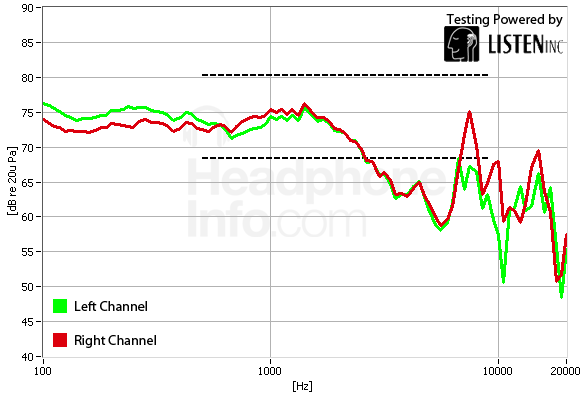
Click here for more information on our frequency response test.
Distortion
{{section_header}}{{section.name}}{{/section_header}}
The HA-M5Xs don't output much in the way of distortion, but these are by no means reference headphones.
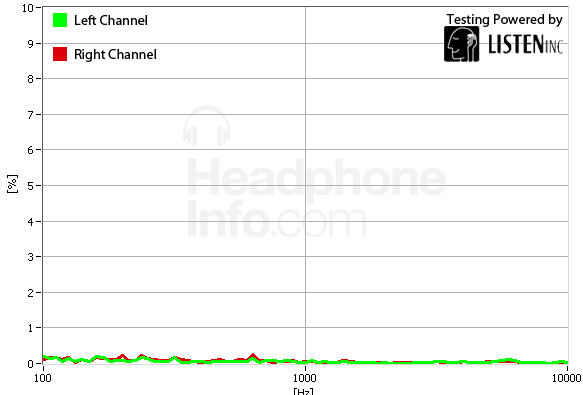
Click here for more information on our frequency response test.
Tracking
{{section_header}}{{section.name}}{{/section_header}}
For the most part the HA-M5Xs don't do a bad job in tracking, but they do tend to favor the right channel a bit before becoming erratic in channel preference at about 4kHz onward.
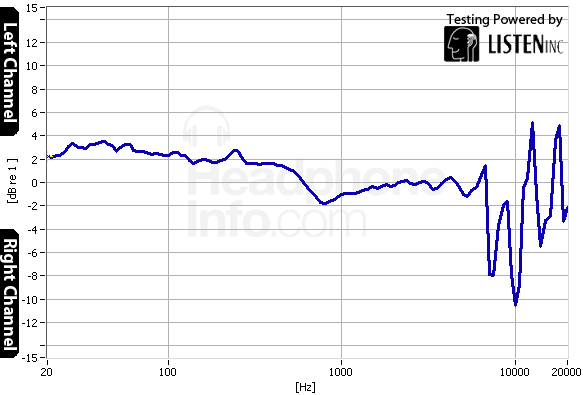
Click here for more information on our frequency response test.
Isolation
{{section_header}}{{section.name}}{{/section_header}}
Given that the HA-M5X headphones do not have much in the way to shield sound from the outside world sneaking past the ear cups, and that there is no noise cancellation feature, it's not terribly surprising that the HA-M5Xs let in a lot of outside sound.
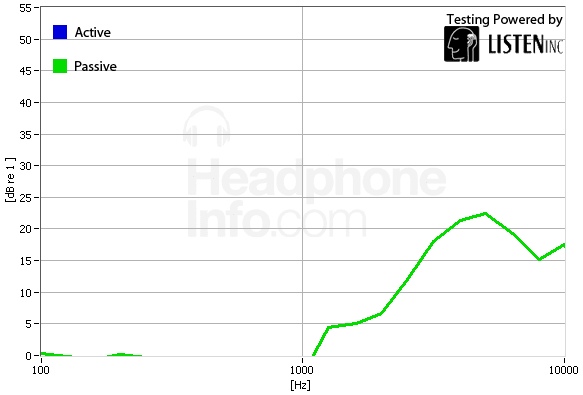
Click here for more information on our isolation test.
Leakage
{{section_header}}{{section.name}}{{/section_header}}
Despite its poor isolation score, the JVC HA-M5Xs actually do a good job of corralling their own sound. We recorded only a small amount of leakage in our tests, so you are unlikely to annoy or reveal your true tastes in music to bystanders.
Click here for more information on our leakage test.
Maximum Usable Volume
{{section_header}}{{section.name}}{{/section_header}}
The HA-M5Xs don't output more than 3% distortion until they exceed 120dB, but as with all our headphone reviews, we strongly caution you to avoid using your headphones at this volume, as they are likely to cause permanent hearing loss at the 120dB threshold.
Click here for more on our maximum usable volume test
Short-Term Use
{{section_header}}{{section.name}}{{/section_header}}
Like always, we'd like to preface this segment with the admonition that how headphones fit are almost entirely subjective, and that what works for us in all likelihood will be different for you; ear canals, helixes and anti-helixes and conchas vary, so we recommend trying headphones on before you buy them.
Perhaps one of the best things going for the HA-M5Xs are the comfort factor: they may not be the prettiest headphones, but they certainly feel great on the ears. When we first put the HA-M5Xs on, it was apparent that JVC paid close attention to how much pressure they put on the helix of the ears, and keeping the padding very soft throughout the entire speaker assembly. The headphones are somewhat heavy, but they are not as bad as they could be.

Extended Use
{{section_header}}{{section.name}}{{/section_header}}
Over the course of several hours, the feel of the headphones didn't really change much, and the padding remained soft and comfortable. No issues with heat or itchiness here.
Customizability
{{section_header}}{{section.name}}{{/section_header}}
As indicated by the score, there really isn't anything you can do with the HA-M5Xs to customize them at all, so the bad marks should not come as a surprise for this category.
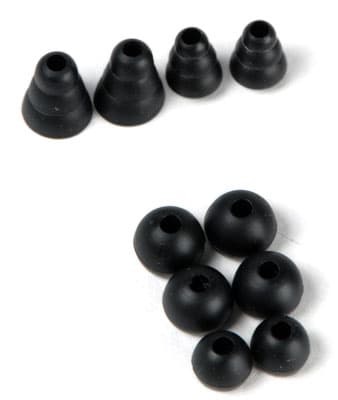
Cable Connectivity
{{section_header}}{{section.name}}{{/section_header}}
The JVC HA-M5X's cable is 3.93 feet, and ends in a standard 1/8th inch jack. This is more or less standard, though they did not come packaged with any adapters.
Portability
{{section_header}}{{section.name}}{{/section_header}}
The HA-M5Xs get low marks here simply due to a combination of the headphones not making any attempt to make portability easier in the headphone design itself, and offering no carrying case or collapsibility.
Maintenance
{{section_header}}{{section.name}}{{/section_header}}
Low marks here too, as the HA-M5Xs do not come packaged with any cleaning tools, nor does it offer anything for ease of cleaning like removable ear cups.
Design
{{section_header}}{{section.name}}{{/section_header}}
Both headphones aren't much to look at, but the Panasonic RP-HTX7P-RSs are a little more pleasing to the eye. That being said, the HA-M5Xs are probably a bit more durable, as they have less pieces to break and have thicker casing.
Frequency Response
{{section_header}}{{section.name}}{{/section_header}}
Interestingly enough, both the RP-HTX7P-RS and the HA-M5X have virtually identical frequency responses, each having relatively the same amount of bass emphasis and each losing ideal response at about 2kHz. There's honestly no real advantage to buying one over the other in terms of frequency response.
Distortion
{{section_header}}{{section.name}}{{/section_header}}
With another near-identical result, the RP-HTX7P-RS and the HA-M5X show roughly the same distortion levels near 1%.
Tracking
{{section_header}}{{section.name}}{{/section_header}}
Seemingly the only place where the HA-M5X sets itself apart from the RP-HTX7P-RS is in tracking, where it read a much better response than the Panasonics, which are very erratic throughout the entire audible frequency range.
Isolation
{{section_header}}{{section.name}}{{/section_header}}
Neither set of headphones isolates much sound, but the HA-M5Xs definitely corral their own sound better, as the RP-HTX7P-RSs contain their own sound as well as a sieve contains water.
Comfort
{{section_header}}{{section.name}}{{/section_header}}
Both headphones are very comfortable, but the RP-HTX7P-RS are much lighter. Really, this one's a push, but if you don't mind the weight of the HA-M5Xs, they do offer much more in the way of padding.
Verdict
{{section_header}}{{section.name}}{{/section_header}}
Overall, it's hard to find headphones that are more identical in almost every way than the HA-M5Xs and the RP-HTX7P-RSs. If a purchase comes down to these two headphones, really the deciding factor will be either looks, tracking, or the $10-20 you'd save by buying the RP-HTX7P-RSs.
Design
{{section_header}}{{section.name}}{{/section_header}}
Despite the obvious differences in headphone type and usage, the Sennheiser CX 680is are very different in design, offering a more stylish yet less durable build. Still, both headphones come with the natural advantages and disadvantages of in-ears versus over-ears, so you the consumer need to take that into consideration when determining the design for you.
Frequency Response
{{section_header}}{{section.name}}{{/section_header}}
Despite the overemphasized bass, the CX 680is had a much better frequency response, peaks outside of the ideal range aside. While both responses are somewhat erratic, you are much less likely to lose higher-frequency sound with the 680is.
Distortion
{{section_header}}{{section.name}}{{/section_header}}
Though neither set of headphones had much in the way of distortion, the 680is will output less throughout the entire range of audible frequencies.
Tracking
{{section_header}}{{section.name}}{{/section_header}}
Despite falling behind the Sennheisers in distortion and frequency response, the HA-M5Xs actually have a more even tracking response than the 680is, as the latter show much more audible shifts in channel preference.
Isolation
{{section_header}}{{section.name}}{{/section_header}}
While neither set of headphones do an extremely good job at isolation, the Sennheiser 680is will block out much more sound from the outside world than the JVC HA-M5Xs, perhaps simply by the very nature of the in-ear design.
Comfort
{{section_header}}{{section.name}}{{/section_header}}
In a matchup between an in-ear model of headphones and an over-ear set, in our minds the over-ears will always win, barring any major issues. In-ears still feel very unnatural to us; jamming a piece of plastic into a small orifice not accustomed to handling foreign objects where they're not supposed to be. Still, some of our readers may prefer them to the clunky, heavy HA-M5Xs, but it's our opinion that the over-ears are much more comfortable.
Verdict
{{section_header}}{{section.name}}{{/section_header}}
As with any set of entry-level headphones, there will usually be strengths and weaknesses offered by any set of headphones you choose to compare with each other, and these two are no different; if you like better frequency response, style and slightly more isolation, pick up the 680is. If you like the over-ear design, increased durability and to save $30, the JVC HA-M5Xs are probably a better buy.
Design
{{section_header}}{{section.name}}{{/section_header}}
Unfortunately for the iPod headphones, their white and grey design is iconic and ubiquitous, and therefore boring to the vast majority of the public. While there really isn't much special about the HA-M5Xs' design, its increased durability and non-ubiquitous design is enough to make them the more appealing of the two from a design standpoint.
Frequency Response
{{section_header}}{{section.name}}{{/section_header}}
The Apple iPhone headphones have a surprisingly even frequency response, even if it's apparent that there are tracking issues from only this graph alone. Still, in comparison to the HA-M5Xs, they don't have the same drop in response at 2kHz onward, even if they oddly underemphasize the bass frequencies.
Distortion
{{section_header}}{{section.name}}{{/section_header}}
This is an easy matchup to decide a victor in, as the Apple iPhone earbuds have an inordinately large amount of distortion in bass frequencies that is rarely seen in headphones over $10. In contrast, the HA-M5Xs have relatively little distortion at all.
Tracking
{{section_header}}{{section.name}}{{/section_header}}
While you're not likely to notice the tracking issues very well, the Apple iPhone earbuds do have some interesting shifts in channel preference along the entire recorded spectrum, whereas the shifts of the HA-M5Xs are much more minor in comparison.
Isolation
{{section_header}}{{section.name}}{{/section_header}}
In a rare occurrence, the tiny amount of isolation provided by the HA-M5Xs are actually preferable, as the Apple iPhone earbuds have literally next to none at all.
Comfort
{{section_header}}{{section.name}}{{/section_header}}
Here is another area in which the HA-M5X is the clear winner. The Apple iPhone earbuds have comfort issues, as many of you probably are already aware of: they sit outside of your ear canal, and aren't really secured by anything so they fall out constantly. Not only that, but when they are in correctly, they really aren't what one would normally describe as "comfortable."
Verdict
{{section_header}}{{section.name}}{{/section_header}}
Aside from the fact that they cost additional money on top of your media player to obtain, the the JVC HA-M5Xs outclass the Apple iPhone earbuds in almost every conceivable way. Sure, they cost more, but in the end, isn't having headphones that are reliable and more comfortable worth it? If money is a real concern, then maybe not, but in the end (as always) it's up to you.
Conclusion
{{section_header}}{{section.name}}{{/section_header}}
While it's plain to see that the JVC HA-M5Xs are by no means studio headphones, but they aren't going to leave you with an empty feeling that you've gotten ripped off if you pick them up either. Despite their bland design and mediocre-to-bad frequency response and isolation, the distortion isn't bad for budget headphones, and they certainly don't skimp on the comfort factor either. In the end, it's up to you to determine what you'd like to spend your money on, but chances are good that it won't be these headphones until they come down a bit more in price.
Meet the tester
A seasoned writer and professional photographer, Chris reviews cameras, headphones, smartphones, laptops, and lenses. Educated in Political Science and Linguistics, Chris can often be found building a robot army, snowboarding, or getting ink.
Checking our work.
Our team is here to help you buy the best stuff and love what you own. Our writers, editors, and experts obsess over the products we cover to make sure you're confident and satisfied. Have a different opinion about something we recommend? Email us and we'll compare notes.
Shoot us an email